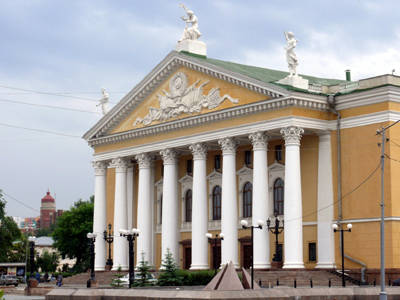
Russia: 1924-1941 - The Five Year Plans
This World History quiz is called 'Russia: 1924-1941 - The Five Year Plans' and it has been written by teachers to help you if you are studying the subject at senior high school. Playing educational quizzes is one of the most efficienct ways to learn if you are in the 11th or 12th grade - aged 16 to 18.
It costs only $12.50 per month to play this quiz and over 3,500 others that help you with your school work. You can subscribe on the page at Join Us
Stalin's seizure of total power in Russia complete, he began to move on to the next part of his agenda: a series of Five Year Plans to vastly increase the production of industry in Russia.
Learn more about Stalin’s Five Year Plans and whether or not they succeeded in their aim of boosting his country's industry in this quiz.
Ready for more?
not all...
quizzers. Try to win a coveted spot on our Hall of Fame Page.







